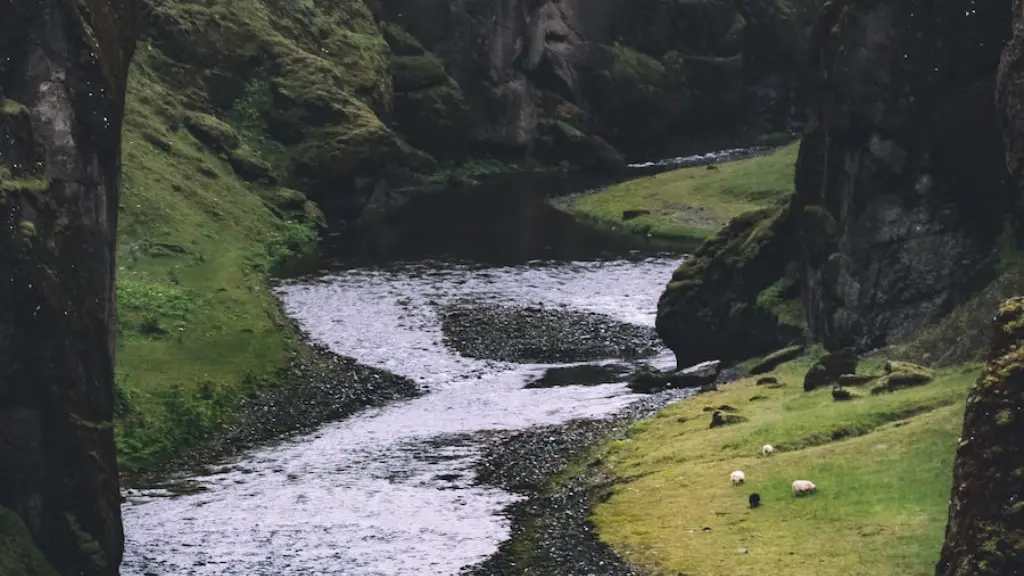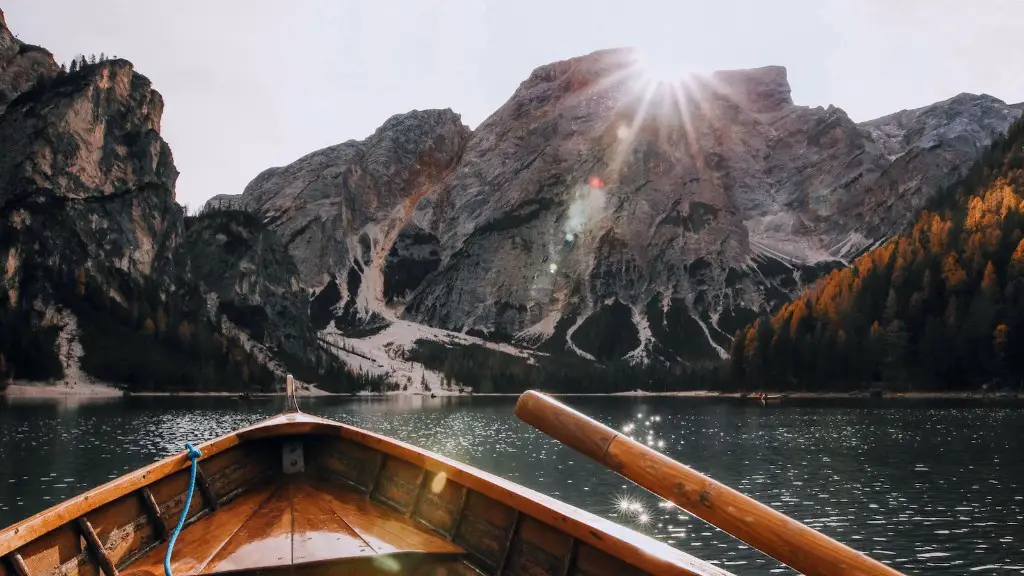The Amazon River is the largest river in the world, and it is home to a immense variety of plant and animal life. However, the Amazon River is also polluted. This pollution is largely due to the discharge of sewage and industrial waste from the growing number of towns and cities along the river. The pollution of the Amazon River has led to the degradation of the river’s water quality and the death of fish and other aquatic creatures.
There is some pollution in the Amazon River, but it is not as bad as the pollution in many other rivers.
Is the Amazon river clean or dirty?
The Amazon river is one of the world’s great rivers, carrying a large amount of sediment (particles of mud and sand) which gives the water a muddy-brown color. Its largest tributary, the Rio Negro, or black river, is filled with chemicals washed out of soil and plants, making the water very dark. The Amazon is a vital waterway for the countries it runs through, providing water for industry, agriculture and households.
The main types of soil contamination in the Amazon Basin Rainforest are from mercury, cyanide and contamination from pesticides. Mercury contamination is found in many areas of the Amazon basin especially along the Tapajos River where gold mining is carried out by an estimated million miners. Cyanide contamination is also found in many areas of the basin due to the widespread use of cyanide in gold mining. Pesticide contamination is a major problem in the Amazon basin due to the widespread use of pesticides in agriculture.
Does the Amazon river have clean water
The Amazon River’s water is not safe for humans to drink, as it is far too muddy and has too many biological components; a person who drank this water would likely get sick.
The Amazon rainforest is one of the most biodiverse ecosystems in the world, and it is under threat from human activities. Mining, logging, ranching, agriculture, and oil and gas extraction have put unsustainable pressure on the delicate rain forests of the Amazon Basin. This has led to deforestation, habitat loss, and pollution, which are all contributing to the decline of the rainforest. The loss of the rainforest would have devastating consequences for the planet, as it would lead to the loss of many unique species of plants and animals, and it would also contribute to climate change. It is critical that we take steps to protect the Amazon rainforest, and to conserve this vital ecosystem.
Can you swim in the Amazon river?
The Amazon is one of the most exciting and diverse swimming spots in the world. With around 60,000km of inland waterways, countless lakes, lagoons and beaches, the Amazon provides a unique and exhilarating experience for swimmers of all levels. Whether you are looking for a challenging swim or a relaxing dip, the Amazon has something to offer everyone.
The Umngot River is one of the cleanest rivers in the world, and is located in the state of Meghalaya, about 100 km from Shilong. The water is so crystal clear that you can see the pebbles and stones under the water clearly visible. This makes for a beautiful sight, and is a great place to relax and enjoy the scenery.
Why is the Amazon water so dirty?
The Amazon River is the largest river in the world, and every day, millions of tons of sediment pour into the Atlantic Ocean from its mouth. The abundance of sediment gives the river its characteristic milky brown color.
Bull sharks are able to live in both freshwater and saltwater environments, so they are able to thrive in the Amazon River. While they aren’t the only type of shark found in the river, they are the most common. These sharks typically grow to be about 7-8 feet long, but can reach lengths of up to 11 feet.
Do snakes live in the Amazon river
The widespread boine fauna of the Amazon River Basin and the Guianas includes five species, namely the boa constrictor (Boa constrictor), the emerald tree boa (Corallus caninus), the common tree boa (C enydris), the rainbow boa (Epicrates cenchria) and the green anaconda (Eunectes murinus). These species are found in a variety of habitats ranging from rainforests to dry forests and even wet grasslands. All of these species are carnivorous and their diet consists mainly of small mammals and birds.
The Amazon is being poisoned by various chemicals and substances, including chlorine, kerosene, sulphuric acid, mercury, and cyanide. These harmful substances are being pumped into the river from mining and cocaine production, making the water unsafe to swim in or drink. This is a serious problem that needs to be addressed in order to protect the Amazon and the people and animals that depend on it.
Why is the Amazon river black?
Black-water rivers are a type of river that gets its water from lowland forests. These forests are rich in leaves and other decaying organic matter, which gives the water in these rivers a black color. This black color is caused by the high concentrations of tannins and other organic compounds in the water. Black-water rivers are typically found in tropical and subtropical areas, and they are an important source of freshwater for many animals and plants.
The Amazon River is the longest river in the world, at 4,345 miles. The average person swims at a rate of one to two miles per hour, so it would take 120 days for someone to swim the entire river if they took no breaks. If someone were to swim for 12 hours every day, it would take twice as long, meaning the swimmer would conquer the Amazon in about eight months.
What is the biggest threat to the Amazon river
The world’s wilderness areas are under immense pressure from human activity. Agriculture, ranching, logging, mining and urban development are all taking their toll, while climate change presents an ever-growing threat. It is essential that we take action to protect these vital ecosystems before it is too late.
There are a few things to keep in mind when travelling in areas with a lot of wildlife. Although most animals are harmless, there are a few that could pose a danger if you’re not careful.
Piranhas, black caiman, and snakes are all examples of animals that can be dangerous if you’re not careful. It’s important to be aware of your surroundings and be cautious when travelling in areas where these animals are present. If you’re ever unsure about something, it’s always best to err on the side of caution and avoid any potential risks.
How much pollution is Amazon responsible for?
each year
In 2019, Amazon’s total carbon footprint was 5,117 million metric tons of carbon dioxide equivalent (CO2e). This included emissions from both their operation and from customer trips to their physical stores. In 2020, their total footprint increased to 6,064 million metric tons of CO2e. The majority of this increase was due to an increase in their lifecycle emissions from customer trips to their physical stores, which rose from 405 million metric tons in 2019 to 277 million metric tons in 2020.
Caimans are actually a member of the alligator family and can reach large sizes. The black caiman rivals the largest crocodile on Earth, the saltwater crocodile of the Indo-pacific realm. Amazon Rainforest crocodiles are actually caiman that have adapted to their environment.
Warp Up
Yes, there is pollution in the Amazon River.
There is no clear evidence that there is pollution in the Amazon River. However, it is possible that there is some pollution in the river, as there is pollution in many other rivers around the world.





